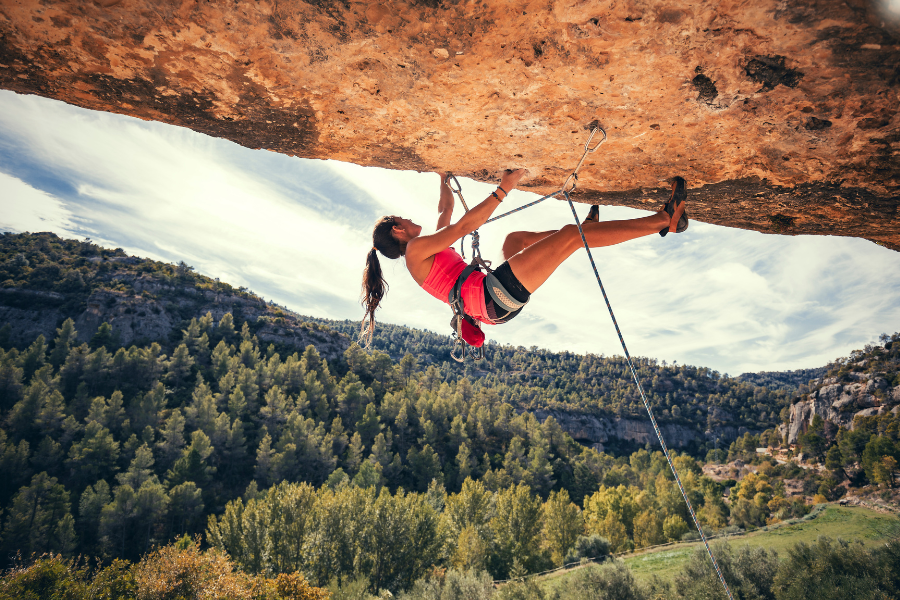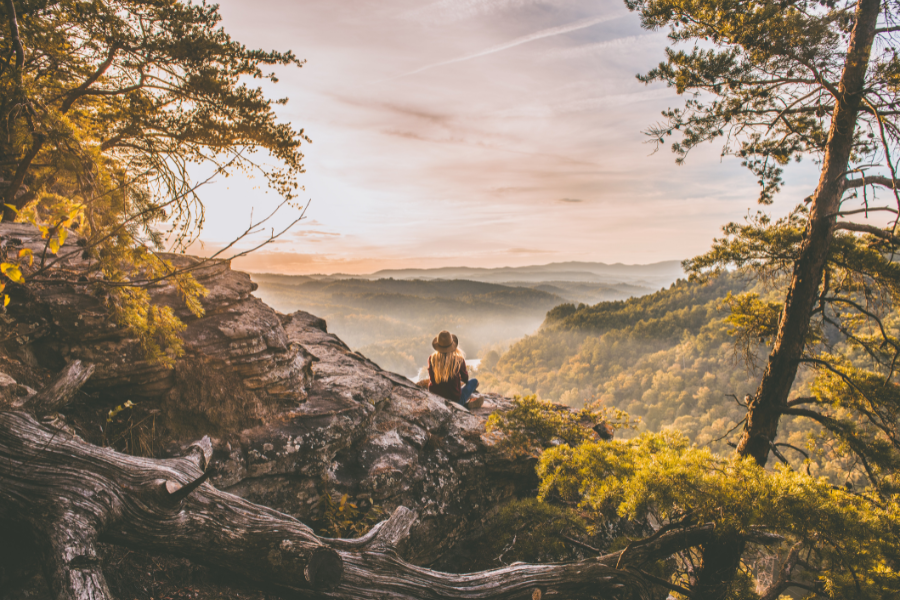Mountains are incredible—they offer breathtaking views, fresh air, and a chance to escape the hustle and bustle of everyday life.
Whether you’re drawn to the thrill of conquering a peak or simply want to enjoy a peaceful hike in nature, there’s something about the mountains that captivates us all.
However, with all that beauty and adventure comes a set of challenges and risks that need to be handled carefully to ensure you have a great time and stay safe.
Whether you’re a seasoned mountaineer or just starting to explore hiking trails, it’s important to follow some key safety guidelines.
We’ll cover everything from planning your trip and preparing physically to what to do during your hike and how to wrap things up after your adventure.
Let’s dive in and make sure your mountain journey is as enjoyable and safe as possible!
Pre-Trip Planning

Research Your Destination
Before heading out on a mountain adventure, it’s super important to do your homework on where you’re going. Get to know the trails, the weather, and any possible dangers so you can be well-prepared.
Study the Terrain
Familiarize yourself with the geography of the mountain. Look at topographic maps, guidebooks, and online resources to understand the trails, elevation changes, and key landmarks. Knowing the terrain helps you anticipate challenges and navigate more effectively.
Weather Patterns
Mountains are notorious for their unpredictable weather. Check the weather forecast regularly as your trip approaches. Understanding seasonal weather patterns can help you pack appropriate gear and clothing. Always be prepared for sudden changes in weather, which are common at higher elevations.
Local Advisories and Alerts
Stay informed about any travel advisories, trail closures, or safety alerts for the area you’ll be visiting. Local ranger stations or visitor centers can provide valuable up-to-date information.
Physical Preparation
Mountaineering requires physical fitness and endurance. Even a seemingly simple hike can be physically demanding due to altitude and rugged terrain.
Fitness Training
Engage in a fitness regimen that includes cardiovascular exercises, strength training, and flexibility exercises. Focus on activities that build stamina, leg strength, and core stability, such as running, hiking, and weightlifting.
Acclimatization
If you’re traveling to high altitudes, acclimatization is crucial to prevent altitude sickness. Gradually ascend to higher elevations, allowing your body time to adjust. Spend a few days at intermediate altitudes before reaching your final destination.
Gear and Equipment

Having the right gear is essential for safety and comfort in the mountains. Your gear list will vary depending on the type of activity (hiking, climbing, skiing) and the season.
Essential Gear
- Navigation Tools: Map, compass, GPS device, and a reliable guidebook.
- Clothing: Layered clothing system (base layer, insulating layer, waterproof/windproof outer layer), hat, gloves, and sturdy hiking boots.
- Shelter: Tent or bivy sack, sleeping bag, and sleeping pad.
- Food and Water: High-energy, lightweight foods, water bottles, or hydration system, and a water purification method.
- Safety Equipment: First aid kit, multi-tool, fire-starting tools, headlamp with extra batteries, and a whistle.
Specialized Equipment
Depending on your specific activity, you may need additional gear such as climbing ropes, harnesses, crampons, ice axes, or avalanche safety equipment.
Permits and Regulations
Many mountain areas require permits for access, camping, or specific activities. Check the regulations for your destination and obtain any necessary permits well in advance. Follow Leave No Trace principles to minimize your impact on the environment.
During the Trip
Safety Precautions
While on your mountain adventure, prioritize safety at all times. Being prepared and cautious can prevent accidents and emergencies.
Stay on Marked Trails
Stick to designated trails to avoid getting lost and to protect fragile ecosystems. Wandering off-trail can lead to dangerous situations and environmental damage.
Monitor Weather Conditions
Keep an eye on the weather throughout your trip. If severe weather approaches, seek shelter and wait it out. Lightning storms, heavy snow, and strong winds can pose significant risks in mountainous areas.
Hydration and Nutrition
Stay hydrated by drinking water regularly, even if you don’t feel thirsty. Dehydration can happen quickly at higher elevations. Eat high-energy snacks and meals to maintain your energy levels.
Altitude Sickness Awareness
Be aware of the symptoms of altitude sickness, which include headaches, nausea, dizziness, and shortness of breath. If you or a companion show signs of altitude sickness, descend to a lower elevation immediately.
Adventure Activities

Mountains offer a range of adventure activities, each with its own set of safety considerations.
Hiking
- Plan Your Route: Choose a route that matches your fitness level and experience. Inform someone of your planned route and expected return time.
- Pace Yourself: Take regular breaks to rest and acclimate. Avoid rushing, which can lead to exhaustion and mistakes.
- Wildlife Awareness: Be aware of local wildlife and know how to react in case of an encounter. Store food properly to avoid attracting animals.
Climbing
- Partner Up: Climbing with a partner enhances safety. Always perform safety checks on each other’s gear.
- Communication: Establish clear communication signals with your climbing partner.
- Weather and Rock Conditions: Be vigilant about changing weather and rock conditions. Wet or icy rocks can be hazardous.
Skiing and Snowboarding
- Avalanche Safety: Learn to recognize avalanche-prone areas and carry avalanche safety equipment (beacon, probe, shovel).
- Stay within Boundaries: Respect resort boundaries and closures. Venturing into off-piste areas can be extremely dangerous.
- Protective Gear: Wear a helmet and other protective gear to minimize injury risks.
Emergency Preparedness
Despite careful planning, emergencies can still occur. Being prepared can make a significant difference in the outcome of an emergency situation.
First Aid Knowledge
Basic first aid knowledge is essential for handling injuries and illnesses in the mountains.
Take a First Aid Course
Consider taking a wilderness first aid course to learn how to handle common mountain injuries such as sprains, fractures, and hypothermia.
Carry a First Aid Kit
Ensure your first aid kit is well-stocked with bandages, antiseptic wipes, pain relievers, blister treatment, and any personal medications.
Communication
Reliable communication can be a lifeline in emergencies.
Carry a Communication Device
A satellite phone, two-way radio, or a personal locator beacon (PLB) can be invaluable in areas without cell phone coverage.
Inform Someone
Always inform a trusted person of your itinerary, including your planned route and expected return time. Check in with them regularly if possible.
Self-Rescue Skills
Learning self-rescue skills can help you manage emergencies until professional help arrives.
Navigation Skills
Be proficient in map reading and compass use to navigate effectively if you get lost.
Survival Skills
Learn basic survival skills such as building a shelter, starting a fire, and sourcing water in the wilderness.
Final Thoughts
See, traveling to the mountains for adventure and exploration is a rewarding experience that requires careful planning and preparation.
By following these guidelines, you can enhance your safety, enjoy the beauty of the mountains, and contribute to preserving these natural wonders for future generations.
Remember, the key to a successful mountain adventure is balancing excitement with responsibility and respect for nature. Safe travels!







